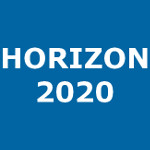Analytical applications of single particle inductively coupled plasma mass spectrometry: a comprehensive and critical review
Bolea, Eduardo (Universidad de Zaragoza) ; Jiménez, Maria S. (Universidad de Zaragoza) ; Perez-Arantegui, Josefina (Universidad de Zaragoza) ; Vidal, Juan C. (Universidad de Zaragoza) ; Bakir, Mariam (Universidad de Zaragoza) ; Ben-Jeddou, Khaoula (Universidad de Zaragoza) ; Gimenez-Ingalaturre, Ana C. (Universidad de Zaragoza) ; Ojeda, David ; Trujillo, Celia (Universidad de Zaragoza) ; Laborda, Francisco (Universidad de Zaragoza)
Resumen: Single particle inductively coupled plasma mass spectrometry (SP-ICP-MS) refers to the use of ICP-MS as a particle counting technique. When ICP-MS measurements are performed at very high data acquisition frequencies, information about (nano)particles containing specific elements and their dissolved forms can be obtained (element mass per particle, size and number and mass concentrations). As a result of its outstanding performance, SP-ICP-MS has become a relevant technique for the analysis of complex samples containing inorganic nanoparticles. This review discusses the maturity level achieved by the technique through the methods developed for the detection, characterisation and quantification of engineered and natural (nano)particles. The application of these methods in different analytical scenarios is comprehensively reviewed and critically discussed, with special attention to their current technical and metrological limitations. The emergent applications of SP-ICP-MS in the field of nanoparticle-tagged immunoassay and hybridization methods are also reviewed.
Idioma: Inglés
DOI: 10.1039/D1AY00761K
Año: 2021
Publicado en: ANALYTICAL METHODS 13, 25 (2021), 2742-2795
ISSN: 1759-9660
Factor impacto JCR: 3.532 (2021)
Categ. JCR: SPECTROSCOPY rank: 10 / 43 = 0.233 (2021) - Q1 - T1
Categ. JCR: CHEMISTRY, ANALYTICAL rank: 34 / 87 = 0.391 (2021) - Q2 - T2
Categ. JCR: FOOD SCIENCE & TECHNOLOGY rank: 63 / 144 = 0.438 (2021) - Q2 - T2
Factor impacto CITESCORE: 4.9 - Engineering (Q1) - Chemical Engineering (Q2)
Factor impacto SCIMAGO: 0.534 - Chemical Engineering (miscellaneous) (Q2) - Analytical Chemistry (Q2)
Financiación: info:eu-repo/grantAgreement/EC/H2020/801586/EU/International Doctoral Programme for Talent Attraction to the Campus of International Excellence of the Ebro Valley/IberusTalent
Financiación: info:eu-repo/grantAgreement/ES/MCIU-FEDER/RTI2018-096111-B-I00
Tipo y forma: Revisión (PostPrint)
Área (Departamento): Área Química Analítica (Dpto. Química Analítica)
 Debe reconocer adecuadamente la autoría, proporcionar un enlace a la licencia e indicar si se han realizado cambios. Puede hacerlo de cualquier manera razonable, pero no de una manera que sugiera que tiene el apoyo del licenciador o lo recibe por el uso que hace. No puede utilizar el material para una finalidad comercial. Si remezcla, transforma o crea a partir del material, no puede difundir el material modificado.
Debe reconocer adecuadamente la autoría, proporcionar un enlace a la licencia e indicar si se han realizado cambios. Puede hacerlo de cualquier manera razonable, pero no de una manera que sugiera que tiene el apoyo del licenciador o lo recibe por el uso que hace. No puede utilizar el material para una finalidad comercial. Si remezcla, transforma o crea a partir del material, no puede difundir el material modificado.
Exportado de SIDERAL (2023-05-26-08:13:48)
Visitas y descargas
Idioma: Inglés
DOI: 10.1039/D1AY00761K
Año: 2021
Publicado en: ANALYTICAL METHODS 13, 25 (2021), 2742-2795
ISSN: 1759-9660
Factor impacto JCR: 3.532 (2021)
Categ. JCR: SPECTROSCOPY rank: 10 / 43 = 0.233 (2021) - Q1 - T1
Categ. JCR: CHEMISTRY, ANALYTICAL rank: 34 / 87 = 0.391 (2021) - Q2 - T2
Categ. JCR: FOOD SCIENCE & TECHNOLOGY rank: 63 / 144 = 0.438 (2021) - Q2 - T2
Factor impacto CITESCORE: 4.9 - Engineering (Q1) - Chemical Engineering (Q2)
Factor impacto SCIMAGO: 0.534 - Chemical Engineering (miscellaneous) (Q2) - Analytical Chemistry (Q2)
Financiación: info:eu-repo/grantAgreement/EC/H2020/801586/EU/International Doctoral Programme for Talent Attraction to the Campus of International Excellence of the Ebro Valley/IberusTalent
Financiación: info:eu-repo/grantAgreement/ES/MCIU-FEDER/RTI2018-096111-B-I00
Tipo y forma: Revisión (PostPrint)
Área (Departamento): Área Química Analítica (Dpto. Química Analítica)
Exportado de SIDERAL (2023-05-26-08:13:48)
Enlace permanente:
Visitas y descargas
Este artículo se encuentra en las siguientes colecciones:
Artículos > Artículos por área > Química Analítica
Registro creado el 2021-09-13, última modificación el 2023-05-26
